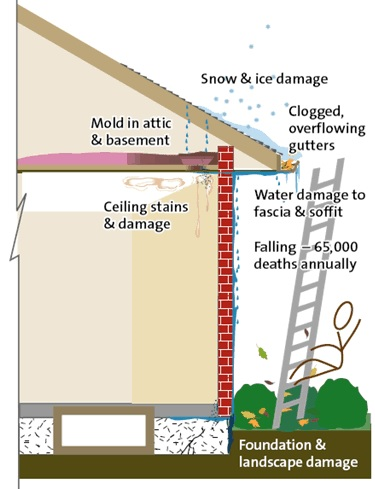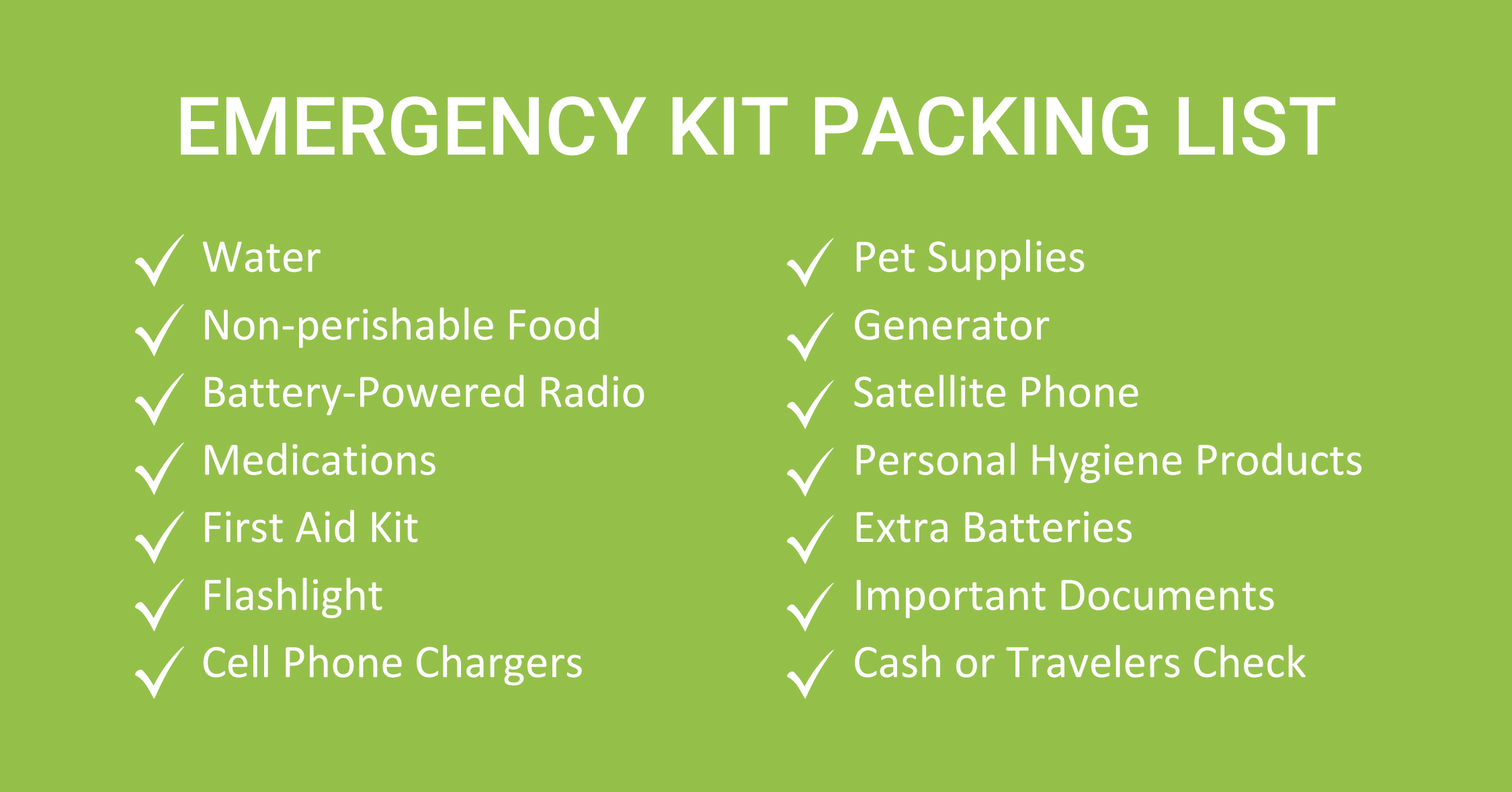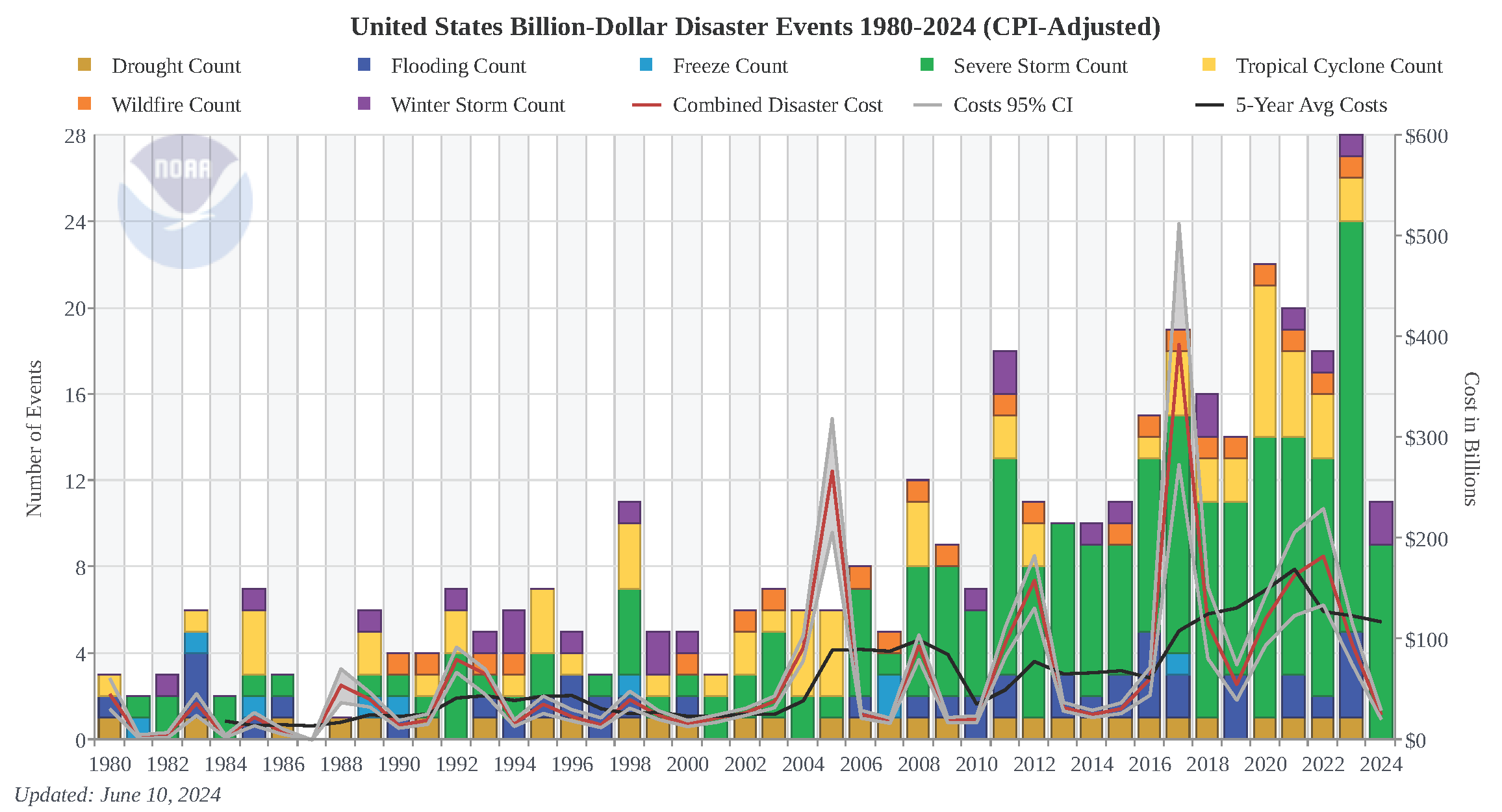There’s little need to search headlines for severe weather. Most of us have experienced some form of extreme weather as climate change and warming seas rewrite our normal. While we advocate for being good climate stewards to slow the damage to the one home we all share, we urge homeowners to also prepare for what’s become inevitable — more frequent and stronger storms.
In 2023 alone, FEMA responded to more than 100 disasters and spent more than $12 billion on recovery efforts. No matter where you live or what type of home you live in, taking the time to plan and prepare for storm season can save you money and reduce stress. Fortunately, there are various ways, both free and paid, to protect your home, property, and loved ones in the event of severe weather. Here are five to get you started:
Tip 1: Inspect & Repair Your Roof
Why It’s Important
- Prevents Leaks and Water Damage: Regular inspections and maintenance help identify and repair issues like missing shingles or leaks, preventing water from entering the home.
- Extends Roof Lifespan: Timely repairs and maintenance prolong the life of the roof, avoiding costly replacements.
How to Do It
- Do-it-Yourself: Visually inspect your roof for missing shingles, leaks, or other minor damage that can be exacerbated during a storm and make repairs using materials like roof sealant.
- Professional: Hire a professional roof inspector to perform a thorough check-up. Pending the results, the next step would be to complete a partial or full roof replacement. Adding advanced weatherproofing like a roof membrane can enhance protection.
Tip 2: Secure Windows & Doors
Why It’s Important
- Enhances Structural Integrity: Reinforcing windows and doors protects them from breaking during high winds, preventing damage and maintaining the home’s structural integrity.
- Prevents Water Intrusion: Properly sealed windows and doors prevent water from entering the home, reducing the risk of water damage.
How To Do It
- Do-it-Yourself: Making temporary window coverings with plywood, adding weather stripping, and installing storm panels are all low-cost ways to protect your windows and doors during severe weather.
- Professional: Permanently reinforce your windows and doors by hiring a specialist to install reinforced door frames or custom-fit hurricane shutters.
Tip 3: Clean Gutters & Drains
Why It’s Important
- Ensures Water Flow: Clean gutters and drains ensure that rainwater is effectively channeled away from the home, reducing the risk of water-related damage and maintaining proper drainage around the property.
- Prevents Structural Damage: Water pooling around the foundation due to clogged gutters can cause cracks and weaken the structural integrity of the home. Properly functioning gutters direct water away from the home, preventing soil erosion that can destabilize the foundation and landscape.

How To Do It
- Do-it-Yourself: Regularly removing debris from gutters and drains using household tools and installing inexpensive gutter guards can prevent clogging.
- Professional: Hire a service provider to perform gutter cleaning, or to install a high-end gutter and drainage system to ensure optimal water flow.
Tip 4: Trim Trees & Shrubs
Why It’s Important
- Minimizes Damage from Falling Branches: Trimming trees reduces the risk of branches breaking off and damaging the roof, windows, or other parts of the home during storms.
- Prevents Blockages and Fire Hazards: Regular maintenance prevents fallen branches from blocking gutters and reduces fire hazards by keeping vegetation away from the house.
How To Do It
- Do-it-Yourself: Remove debris and trim branches using household gardening tools you may already have. Some neighborhoods in storm-prone areas may even organize community clean-up days allowing neighbors to help neighbors.
- Professional: A tree trimming service can provide seasonal tree maintenance, keeping trees severe weather-ready. The service provider might also offer tree removal if a tree poses a significant risk to the home.
Tip 5: Create an Emergency Plan & Kit
Why It’s Important
- Ensures Readiness: Having an emergency kit and plan ensures you have the necessary supplies and a clear course of action during a storm, reducing panic and ensuring safety.
- Facilitates Quick Evacuation: A well-prepared plan helps families evacuate quickly and safely if necessary, minimizing risks during emergencies.
How To Do It
- Do-it-Yourself: Assemble items like water, non-perishable foods, medications, pet supplies, and a first aid kit. Develop an evacuation plan for multiple scenarios and familiarize yourself with your community’s evacuation routes.
- Professional: You can hire a professional to develop a detailed emergency plan and conduct family drills. They might recommend adding advanced items to your emergency kit, like a generator and satellite phone.

Preparing for storm season is not just a precaution—it’s a necessity in today’s climate. As we face more frequent and severe weather events, taking proactive steps to protect our homes is crucial. The measures outlined, from inspecting and maintaining your roof to creating an emergency kit and plan, can significantly reduce the risks and damages associated with storms.
Whether you choose DIY solutions or professional services, these preparations can save you money, reduce stress, and potentially protect your home. By implementing these five tips, you’ll safeguard your property and ensure the safety and well-being of your loved ones. Start today and take the necessary steps to weather the storm with confidence and peace of mind.

